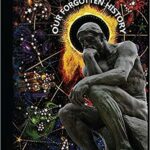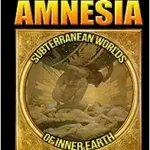
Summary
➡ This text discusses various theories and legends about the early inhabitants of the Americas, including the Uruk Indians, the Nephilim, and the Paiutes. It also mentions the Salutrian hypothesis, which suggests that people from Western Europe may have been among the first to populate the Americas, challenging the widely accepted theory that the first settlers came from Siberia via the Bering Land Bridge. The text also explores the controversial use of the swastika symbol by Native American tribes and the possible Jewish heritage of Christopher Columbus. Lastly, it suggests that the name ‘America’ may have originated from the Peruvian god Amaru, rather than from explorer Amerigo Vespucci as commonly believed.
Transcript
Uruk society had no chiefs, but in each village one man acted as a leader who was trained by elders. The leader’s training would include a vision quest in which he would communicate with the natural environment and the spirit world. Uruk medicine people were usually women. Women would become shamans after dreaming of being told to do so. Another shaman would then assist her in a ritual dance. Shamans would use plants, prayers, and rituals to heal people, and also perform ceremonies to ensure successful hunting, fishing, and gathering. By 1870, the Uruk population was estimated to number around 1,350 individuals, but is currently estimated to have over 6,000 members.
Probably the most famous member of the tribe was Shenoa Wichoa, who is commonly known by her English name Lucy Thompson. She is known to have come from Uruk aristocracy and authored a book called To the American Indian, Reminiscence of a Uruk Woman. Written in 1916, the book is intended to preserve her people’s stories. She intended to tell the stories of her people that were not being told by others and to make others better understand her people and perspective. Although she criticized white settlers for practices like overfishing and expressed that violence towards indigenous Californians were deliberate acts of genocide, she also provided rare insight into the history of the Americas through the eyes of a tribe that had called California home for many thousands of years, some of which I would like to share with you today.
The following excerpt comes directly from her book, which she starts by saying, As there has been so much said and written about the American Indians, with my tribe, the Klamath Indians included, by the white people, which is guessed at and not facts. In this book, I will endeavor to tell all in a plain and truthful way without the least coloring of the facts and will add many of our fairy tales and mother’s stories to their children. That said, I will now start by reading from a chapter called, Traditions of the Ancient White People.
When the Indians first made their appearance on the Klamath River, it was already inhabited by a white race of people known among us as the Wagas. These white people were found to inhabit the whole continent and were a highly moral and civilized race. They heartily welcomed the Indians to their country and taught us all of their arts and sciences. The Indians recognized the rights of these ancient people as the first possessors of the soil and no difficulties ever arose between the two people. Their hospitality was exceedingly generous in the welfare of our people and all prospered together in peace and happiness, in the pursuit of human existence.
After a time, there were intermarriages between the two races, but these were never promiscuous. For a vast period of time, the two races dwelt together in peace and honoured homes. Wars and quarrels were unknown in this golden age of happiness. No depredations were ever committed upon the property of their people as the white people ruled with a beacon of light and kindness and our people still worshipped the hollow places where they once trod. Their morals were far superior to the white people of today and their ideals were high and inspired our people with greatness.
After we had lived with these ancient people so long, they suddenly called their host together and mysteriously disappeared for a distant land. We know not where. We have no memory of their reason or cause why they abandoned their ancient homes where they had dwelt for untold centuries. Wars did not drive them forth, for we loved them more than brothers and difficulties were unknown between the two people. On leaving, they went towards the north from whence they came and disappeared from our land beyond the northern seas. It was a sad farewell when they departed from this land, for our people mourned their loss, as no more have we found such friends as they so true and loyal.
In their farewell journey across this land, they left landmarks of stone monuments, on the tops of high mountains and places commanding a view of the surrounding country. These landmarks we have kept in repair, down through the ages in loving remembrance. I have seen many of these landmarks myself, and often repaired them, that they left as a symbol of the mystic ages and the grandeur of a mighty nation that passed in a single season. Oh, how little we know of the depths of the ages gone! How wide, how profound and deep is the knowledge we seek! A monument of stone, a stone bowl, a broken symbol, a hallowed unknown spot, a lodge of ruins.
All this makes a golden page glittering with diamonds that trills the emotions with mysterious longings for truth and light in the depths of unknown. When the Wagas left this land, they assured my people that they would return to them at some future time, perchance thousands of years have elapsed since then, and they have not returned. We have waited in vain, for it seems that our cherished hopes are fading. However, some of our people are still looking for the return of the white man. When the Wagas first arrived on the continent, they had handed down the traditions to us that it was inhabited by a giant race of people when they first came.
These giants used implements so large that no ordinary man could lift them. It was an age when large animals roamed the earth, and it seems the birds and fowls were all very large in size. It appeared to be the first age, and was the age of giants. The recollections transmitted by the Wagas were that these giants were very cruel and wicked. It was said that God became displeased with them and destroyed them, and they all perished from the earth. It was also said that God appeared to the high priests of the Wagas, and told him that he was going to destroy the giant race, and that the Wagas themselves would survive upon the earth as a new people.
Smaller birds and animals would appear upon the earth for the use of man. Thus, the age of giants perished, but the Wagas do not hand down any traditions of how they perished from the earth, as my people have no recollections of ever seeing giants. My mother says that our people in ancient times have seen many relics belonging to these prehistoric giants, such as huge stone bowls, stone slabs, and other implements so great that our people could not move them. During the ages of rains and wearing away of the earth, these implements have been buried so deep and have sunk into the earth that is the reason we cannot find them today.
The Indian name for the giant race is Pa Pelin, which means people that have all died and passed away. When the Wagas returned to Chikikaka, the original home, it is supposed that they found a ladder in this beautiful valley which extends from earth to heaven and climbed it to Warsana, or heaven, where they dwell with God. All the half-castes, with the exception of a few, went away with the Wagas, and nearly all of those that were three-quarter Indian remained with our people. This is said to be the reason why some of our people are very fair.
Some of the Indians are still looking for the return to earth. When they come back, it is believed that peace and happiness will reign supreme again over this great land, and all evil will be cast out. When the present race of the white people made their first appearance on the American continent, we believed it was the Wagas returning, and a hearty welcome was extended to them, and there was a great rejoicing among our tribes. But soon, the sad mistake was discovered to our sorrow when the men began to debauch our women, give whiskey to our men, and claim our land that our forefathers had inhabited for so many thousands of years.
Yet not a single family has ever been driven from their house on the Klamath River up to this day. We no longer term them as Wagas, but as Kenyas, which means foreigners, who had no right to the land and could never appreciate our kindness, for they were a very different people from the Wagas. They had corrupt morals that brought dissolution upon our people and wrought the horrors of untold havoc. The traditions handed down tell of epidemics that came up the river and laid us down in devastation of life. Thousands of our people would pass away in a single season.
They would die so fast that they could not be buried and many of the bodies would be thrown into the river. The only way we could keep the whole tribe from complete devastation by the ravages of these dreadful diseases was to abandon the dead and leave the river and go back into the high mountains. And there we built bark houses and remain until the snow and cold would compel us to retreat to the lowlands again. Of course, these oral traditions of the Uruk Indians are strikingly similar to the words found in Genesis chapter of the Bible, which is mirrored in the book of Enoch and the book of Giants, which indicate that the Nephilim were malevolent giants who, quote, consumed all the acquisitions of men and devoured mankind, devouring one another’s flesh and drinking the blood.
Arising from the union of humans and fallen angels known as the Watchers, we’re also reminded of another Native American author, Sarah Winamecca, daughter of a Paiute chief, who wrote in 1883 about what she described as a tribe of barbarians who are also described as very tall or as giants who ate her people. In her book, Life Among the Paiutes, there are wrongs and claims. She wrote that her people had killed them all, and that the tribe they exterminated had reddish hair, quote, I have some of their hair, which has been handed down from father to son.
I have a dress which has been in our family a great many years, trimmed with the reddish hair. I’m going to wear it sometime when I lecture. It’s called the morning dress, and no one has such a dress but my family. The theme of ancient white gods, described as having blonde hair and blue eyes, is common in both North, Central, and South America. The Aztec, for example, regarded their god Quetzalcoatl as being blonde, bearded, and blue-eyed, as depicted in Mexican school books, which is why the Aztec initially revered and welcomed Hernán Cortés and the Spanish conquistadors, believing they were the returning gods, only to be conquered by them.
A similar fate befell the Inca, who greeted Francisco Pizarro and the Spanish as the incarnation of their former white gods, which they called Viracochas, because of their lighter skin which resembled legends of their god Viracocha, sharing the phenotype of their many blonde and red-headed mummies and ancient blue-eyed artifacts. These legends and the fossil record that supports them have added weight to what’s known as the Salutrian hypothesis. Archaeologists have found evidence that disproves the idea that the Clovis people were the first to spread across the Americas via a corridor between the ice sheets of modern Canada.
For a better part of the last century, it was taught in all federally funded universities that humans made it from Siberia to Alaska via the Bering Land Bridge before moving down the corridor and populating the rest of North and South America. Totally ignoring archaeological evidence in Mexico and South America which date back over 30,000 years. Finally putting the debunked and obsolete Clovis first theory to rest. Clovis refers to a type of stone tool technology, a very specific type of bifacial spear tip used for hunting, attributed to a wave of settlers to the New World at the end of the Pleistocene or Ice Age.
In my books, I link up this Clovis spear tool technology to what is called Salutrian technology in Western Europe. This concept is still considered radical in mainstream anthropology and very controversial anywhere where the United Nations has any influence on academia. It implies a Eurocentric perspective on the peopling of the Americas at least in part and despite this globalist social engineering, a remarkable series of several dozen Salutrian style stone tools dating back between 19,000 and 26,000 years have been discovered at six different locations along the United States East Coast. You can learn more about these finds by following the work of Professor Dennis Stanford at the Smithsonian Institute who did pioneering work on the topic before passing away recently.
Another fascinating Native American artifact that I document is this green slate stone swastika and if you look closely you can see that they are snakes or serpents. This socially controversial symbol was outlawed in 1940 with Native American tribes abandoning it for political reasons and it seems odd that it’s still forbidden 80 years later especially when it was held in such high esteem by so many Native American tribes. Enough so to not only be posted on Arizona highway signs before World War II but the swastika appears on Clovis spear tips if you look close.
It seems clear that the ancient symbol found on both sides of the Atlantic are being suppressed not because they have a hateful meaning but because it disrupts the incumbent narrative of how the world was populated in antiquity which flies in the face of the out of Africa theory which I also debunked in another video which is linked in the description. The seemingly academically corrupt politicians which have imposed censorship in the media seem intent on suppressing the truth about humanity’s true history including the founding of our nation while 1492 is probably most famous as the year given for when Christopher Columbus sailed the ocean blue it was also a time of great change in Europe when Jews were facing a choice of mass conversion, expulsion or worse a time historically known as the Spanish Inquisition.
It seems much of the history we are given about Columbus and the peopling of the Americas are fairy tales. Now, talking about Christopher Columbus, a lot of people don’t know but I’m sharing this with you he was a Comberso, meaning he too was a crypto-Jew or a Jew in hiding. It so happens that the majority of the passengers on La Nina, La Pinta, La Santa Maria his fleet of ships were of our kind of surname. What kind of surname? Hispanic surnames, Spanish surnames. We are the descendants, many of you are descendants of the secret Jews of Spain.
That’s the crypto-Jews I’m referring to. But what did the elite members of the occult think about this? Such as Manly P. Hall, honorary 33rd degree Freemason. Speaking of America, just how did it get that name anyway? Officially, America is named after the explorer, Amerigo Vespucci but this appears doubtful, like so much of American history which has transformed a one-time pirate of the family name Griego into an iconic hero named Christopher Columbus. As for America, according to Manly Hall, America is named after the plumed serpent who is the messenger of the sun.
He was the god Quetzalcoatl in Mexico and in Peru he was called Amaru. From the latter name comes our word America. Amarucca is literally translated, land of the plumed serpent. My name is Robert Sepper, I’m an anthropologist. My published work is available on Amazon and through all other major book outlets. If you’d like to support my work you can do that through Patreon.com. There should be a link in the description. Please subscribe for future updates. Leave your thoughts below. Have a wonderful weekend and I hope to see you again soon. [tr:trw].








